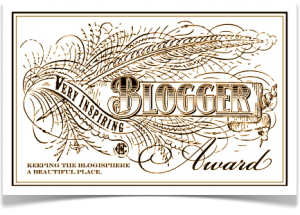The Mass-Media Madhouse
(Press-Central For Handy Soundbites, Useful Info,
And A Good Wet-Your-Pants Laugh)
Home / The Mass-Media Madhouse
(Press-Central For Handy Soundbites, Useful Info,
And A Good Wet-Your-Pants Laugh) / Smead Organomics / As Published In Smead Organomics --
Setting Up An Effective Filing System
As Published In Smead Organomics —
Setting Up An Effective Filing System

How’s your filing system? Frustrating? Is it too hard to remember where things go? Do you have trouble locating a specific document again once you’ve stashed it away? You may even have three or four files that contain the same information but are labeled differently. What a mess — time to get organized!
Fixing The Problem
What causes the downfall of a filing system? Chances are it wasn’t much of a “system” to begin with. More likely, it was just a random assortment of individual files with no real connection to each other. To create a truly effective solution, you need to start with a plan. Simply slapping a label on a folder won’t cut it.
Creating File Categories
Look at your current filing system (or that pile of paper that you’ve been meaning to deal with for months) and start sorting documents into broad categories. “Finances” might be one — “house stuff” could be another. At this point, we’re not focusing on the detail of your filing system. Quite frankly it doesn’t matter if it’s a credit card bill or a bank statement right now. We’ll worry about those distinctions later on.
Subcategorizing
Pick one of your “major category” piles and let’s sort through it again. This time, think about breaking your paper into smaller subcategories. For example, your “finances” pile could be divided into:
- savings account
- checking account
- student loan
- credit card account
Be specific; don’t just say that they are “bank statements”. Determine which account they belong to and break each out into a separate pile. We don’t want any subcategories “bunking” with other files — everyone gets his or her own separate folder.
Color Coding
Each major category should be assigned a different color (your choice) — then we’re going to put each of its subcategories into an individual hanging file folder. In the example above, “finances” might be green, and each account gets a separate green file folder. It seems like a small thing, but color-coding your system will save you a huge amount of time in filing and retrieving papers. Being able to look in your file drawer and see distinct bodies of information broken out by color just makes SENSE to your brain. When you know your financial section is green, your house section is blue, and your car papers are in red, you don’t even have to think because your hand naturally goes to the right part of your drawer.
Label Making
Now that everyone has a colored folder, we need to label each file. When creating labels, move from general to specific. Don’t tell me it’s paperwork for a “Visa credit card” — call it “credit card: Visa.” When you arrange your folders alphabetically, all the “credit card” files (no matter how many you have) will be together in your “finances” section. Our goal is to keep related files in close proximity to each other. Do this again and again for every grouping of files until you have labeled every file in each major category.
Filling Your Drawer
All you have to do now is put the files within each major category in alphabetical order, and then put the major categories themselves into the drawer in alphabetical order — tabs are in straight lines for easy reading. Whenever you need to find a document or put something in a folder, just look first for the correct major category, then the right subcategory (easily identified by both the labels and the color). With the right filing system it’s easy to put your hands on the correct file without a lot of searching.
Click here for reuse options!Copyright 2001 RamonaCreel.com
 PS: Wanna instantly rack up some serious virtual cred? I've made it easy for you to share this content with your social networking friends, e-mail it to your peeps, or republish it in your own blog (thereby showing off how smart you are) with these links.
PS: Wanna instantly rack up some serious virtual cred? I've made it easy for you to share this content with your social networking friends, e-mail it to your peeps, or republish it in your own blog (thereby showing off how smart you are) with these links.
(iCopyright widget here)
"I Have More To Say About This... No Surprise!"
If you would like to reprint this page, please contact me
Comments are closed.





